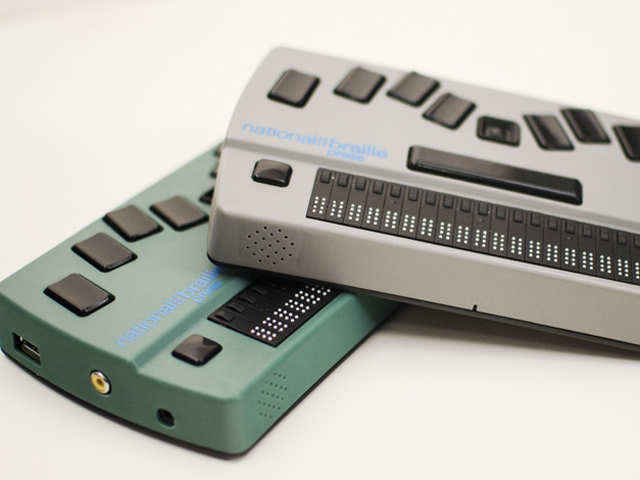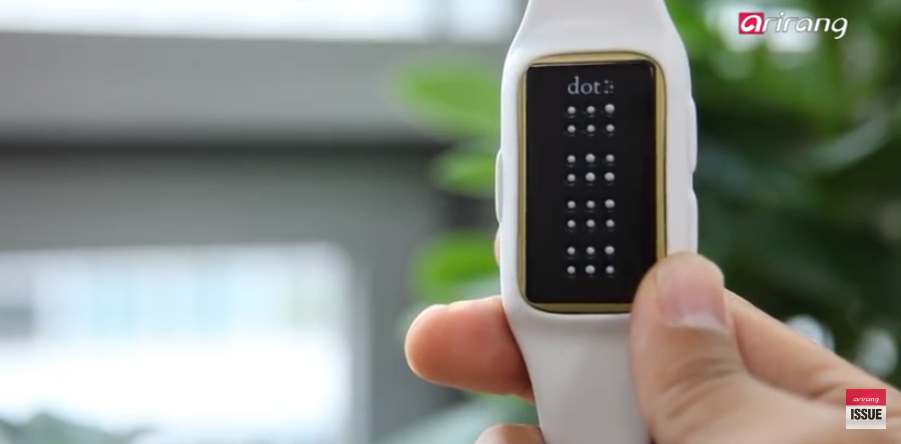Discover Cutting-edge Tools Created for the Aesthetically Damaged
The development of innovative tools for the aesthetically impaired represents a substantial development in accessibility and independence. Technologies such as smart glasses with AI capabilities and mobile applications created to offer acoustic descriptions are improving everyday experiences for customers. Furthermore, wearable devices that employ haptic comments enhance ecological recognition, while modern-day Braille developments supply new methods to engage with text. As these tools proceed to evolve, their influence on the lives of those with visual problems elevates essential concerns regarding the future of inclusivity and freedom in various facets of life. What lies in advance in this technological landscape?
Smart Glasses for Navigating

Smart glasses created for navigating are reinventing the means aesthetically damaged people connect with their setting. These sophisticated devices make use of a mix of camera technology, man-made knowledge, and acoustic feedback to provide real-time information regarding surroundings. By utilizing challenge detection systems, smart glasses can alert individuals to possible hazards, allowing safer movement in both unknown and acquainted settings.
The integration of GPS modern technology even more boosts navigation capacities, allowing individuals to get acoustic directions as they relocate. This hands-free approach not just cultivates freedom but likewise empowers aesthetically impaired people to browse metropolitan landscapes with boosted self-confidence. In addition, many smart glasses are outfitted with attributes that identify landmarks and road signs, offering contextual info that enhances the customer experience.
Moreover, the growth of these gadgets is continually advancing, with business working to enhance the precision of object acknowledgment and expand the variety of navigational functions. As clever glasses become extra inexpensive and available, they hold the potential to dramatically change daily life for visually damaged individuals. Eventually, these ingenious tools stand for a crucial step towards inclusivity, offering improved mobility and a greater sense of autonomy for people browsing the globe around them.

Mobile Application for Daily Living
How can mobile applications enhance the lives of aesthetically impaired individuals? Mobile apps are reinventing the way aesthetically damaged customers browse their environments, take care of day-to-day tasks, and accessibility info. These applications provide essential support via different performances, fostering freedom and improving lifestyle.
Numerous cutting-edge mobile applications are designed especially for daily living. As an example, apps like Be My Eyes connect aesthetically impaired customers with sighted volunteers by means of video telephone calls, enabling them to receive real-time aid with tasks such as reviewing labels or browsing unknown spaces. Seeing AI, created by Microsoft, uses fabricated intelligence to explain environments, reviewed text, and determine things, effectively changing a smart device right into a powerful tool for everyday help.
Additionally, navigation apps customized for the aesthetically impaired, such as Aira and BlindSquare, provide audio-based directions and ecological details, making it possible for customers to traverse their surroundings safely and confidently. Past navigating and prompt aid, mobile apps also support organization and job monitoring, with attributes that aid customers establish reminders, create to-do listings, and track visits. In recap, mobile applications act as important resources, equipping visually impaired individuals to lead more independent and satisfying lives.
Wearable Technologies for Help
Empowerment with innovation is progressively obvious in the world of wearable gadgets developed to help visually impaired individuals. These innovative devices incorporate flawlessly right into life, improving navigation and offering vital comments to users. Clever glasses furnished with cams can review and acknowledge faces text out loud, enabling users to connect more confidently in social and specialist settings.
An additional significant development is making use of haptic comments systems in wearable devices. These systems make use of vibrations or various other tactile signals to convey info about the customer's environment, such as barriers or modifications in surface, enhancing flexibility and security. Wearable technologies likewise consist of wristbands that link to mobile phones, notifying individuals to notifications with refined vibrations, hence improving connectivity without dependence on aesthetic cues.
As these modern technologies remain to advance, they are not only improving freedom for visually damaged people but likewise cultivating a higher feeling of addition in culture. By bridging the space in between obstacles faced in everyday living and the possibility for autonomy, wearable modern technologies act as critical devices in the pursuit for equality and empowerment for those with visual disabilities.
Sound Summary Devices
Sound description tools play a crucial function in improving accessibility for visually damaged individuals, giving them with the capacity to involve with visual media. Mobility aids for visually impaired users. These tools provide narrated descriptions of crucial visual aspects in films, television shows, and live performances, guaranteeing that individuals can completely comprehend the context and emotions communicated with visuals
Audio summary can be incorporated right into various systems, consisting of streaming solutions, movie theater testings, and live movie theater. Lots of prominent streaming services now consist of audio summary as an ease of access feature, allowing viewers to pick it conveniently. Along with conventional media, specialized applications additionally exist, giving audio summaries for art exhibits, museums, and various other social events.
The effectiveness of audio description rests on the skill of the storytellers, that should convey aesthetic information succinctly without diminishing the original audio. Developments in this field are additionally leading the way for even more personalized experiences, where customers can readjust the degree of detail and pacing according to their choices.
Braille Innovations and Tools
Braille tools and technologies have actually significantly transformed the way visually impaired people connect with text and information. Modern advancements have caused the growth of functional devices that boost literacy and independence amongst customers. Especially, Braille present technologies have actually advanced, enabling vibrant analysis experiences. These gadgets convert digital message right into Braille, making it possible for customers to access a huge variety of info on tablets, computers, and mobile phones.
Moreover, mobile Braille notetakers combine typical Braille input with modern performances, helping with note-taking, organizing, and paper editing on the move. Braille displays and notetakers. These portable devices usually feature text-to-speech capabilities, linking the gap between Braille and acoustic information
Additionally, innovative Braille printers have Smart glasses for the visually impaired arised, allowing customers to generate Braille tags, papers, and instructional materials effectively. This accessibility fosters greater engagement in educational and professional environments, ultimately promoting inclusivity.
In addition, research into wise Braille modern technologies remains to broaden. Devices that incorporate man-made knowledge are being discovered to provide real-time navigation support and contextual info, improving the user experience in diverse settings. In general, these technologies reflect a commitment to empowering visually impaired individuals through innovation, ensuring they can quickly gain access to and engage with the globe around them.

Conclusion
The development of ingenious devices for the aesthetically impaired substantially improves independence and quality of life. These modern technologies not only foster higher incorporation yet additionally advertise freedom in everyday activities, eventually contributing to a much more equitable and accessible society for aesthetically damaged people.
As wise glasses end up being much more available and inexpensive, they hold the potential to significantly change everyday life for visually impaired users. Mobile apps are transforming the way aesthetically damaged users browse their settings, handle daily jobs, and gain access to information. Applications like Be My Eyes link visually damaged individuals with sighted volunteers via video clip phone calls, allowing them to obtain real-time support with tasks such as checking out labels or browsing unfamiliar rooms.Furthermore, navigation applications tailored for the aesthetically impaired, such as Aira and BlindSquare, supply audio-based directions and ecological info, enabling individuals to traverse their surroundings securely and confidently.The improvement of innovative devices for the visually impaired significantly improves independence and top quality of life.